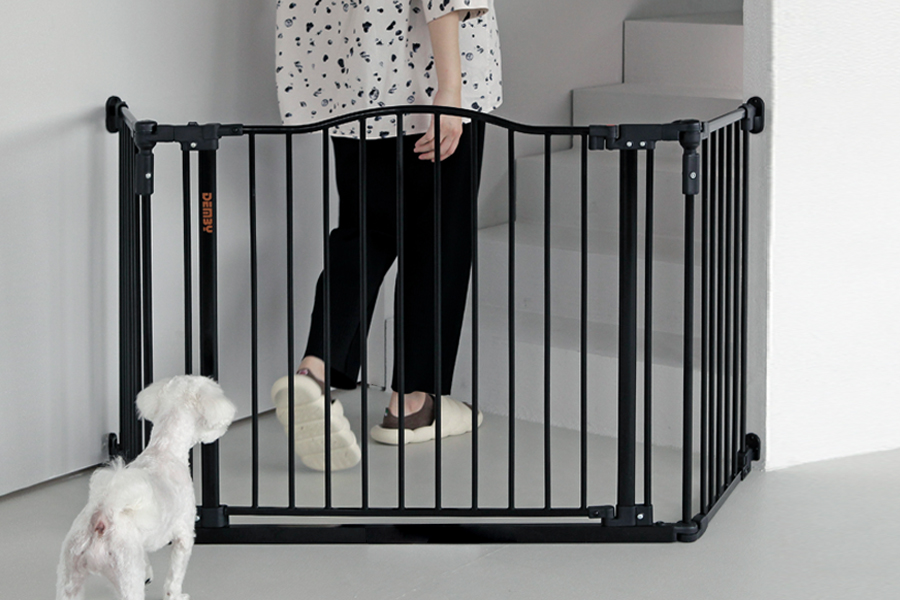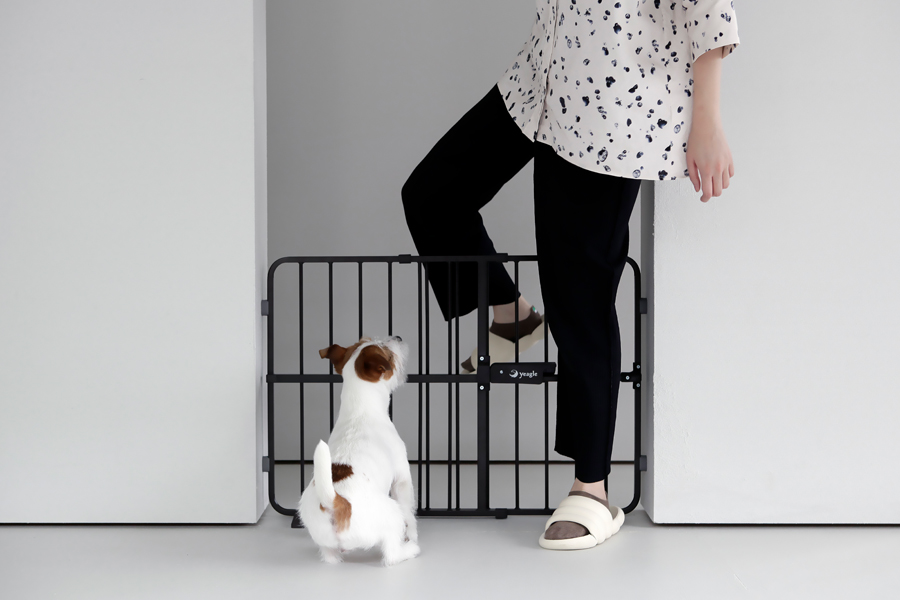Pet Safety: What Kind of Dogs Need Safety Gates?
 Dogs are vital members of many families, and sometimes it's necessary to take precautions to ensure their safety within the home environment. Often, accidents are more likely to occur indoors than outdoors. One of the most direct and secure methods of protection is to restrict a dog's access to potentially hazardous areas within the home, such as balconies or kitchens. So, when should pet owners consider using safety gates or barriers?
Dogs are vital members of many families, and sometimes it's necessary to take precautions to ensure their safety within the home environment. Often, accidents are more likely to occur indoors than outdoors. One of the most direct and secure methods of protection is to restrict a dog's access to potentially hazardous areas within the home, such as balconies or kitchens. So, when should pet owners consider using safety gates or barriers?
1.Puppies or New Additions:
When preparing to bring a new dog or puppy into the home, safety gates or barriers are essential. Whether it's a young pup or a newly arrived dog, they need time to adjust to their new surroundings. Using safety gates or barriers allows them to move around in a safe, controlled area, protecting both their safety and the integrity of the home environment. Coupled with training within these boundaries, it can help them quickly familiarize themselves with the household rules and safe spaces.

2.Home Environment Protection:
Typically, homes have specific hazardous areas such as staircases, kitchens, workshops, and so forth. These areas often require cleanliness or entail certain risks, prompting efforts to prevent pets from accessing them. In such scenarios, safety gates or barriers can effectively restrict fur babies from entering these zones while maximizing home accessibility and minimizing aesthetic disruption.
3.Behavioral Management/Training Needs:
Whether it's a new addition to the family or a long-time companion, dogs may exhibit behavioral issues such as furniture destruction, chewing, door rushing, or even aggression towards visitors. In such cases, safety gates or barriers serve as effective tools for pet behavior management, helping to isolate off-limit areas and providing more opportunities for proper behavioral training. Owners can also set up familiar dog beds, toys, and feeding stations within the safety enclosure, offering their dogs a comfortable and secure environment.

4.Multi-Dog/Multi-Pet Household:
In households with multiple dogs or various types of pets, conflicts between pets may occasionally arise, such as food disputes, territory struggles, or even aggression. In such cases, multi-pet households can designate individual comfortable zones for each pet, providing them with ample space and a sense of security. This approach effectively reduces unnecessary conflicts among pets.
5.Elderly/Injured Dogs:
Elderly dogs or those with mobility issues require additional protection and care. They may experience mobility limitations, as well as auditory and visual impairments. Safety gates or barriers can prevent them from falling or being disturbed in hazardous areas, allowing them to rest undisturbed. Additionally, such safety spaces make it easier for owners to provide care and monitor their dogs' condition.
Safety gates or barriers serve as supportive tools to alleviate the caregiving burden for owners, rather than substitutes for supervision. Providing dogs with ample care and affection, along with appropriate training, is the foundation for establishing a positive interaction and trust between owners and pets. Whether it's for new or young dogs, behavior management training, protecting important areas, or meeting dogs' specific care needs, safety gates or barriers are the most direct and convenient choice!